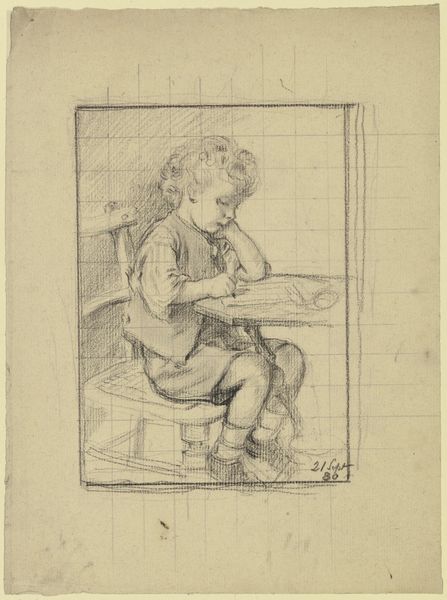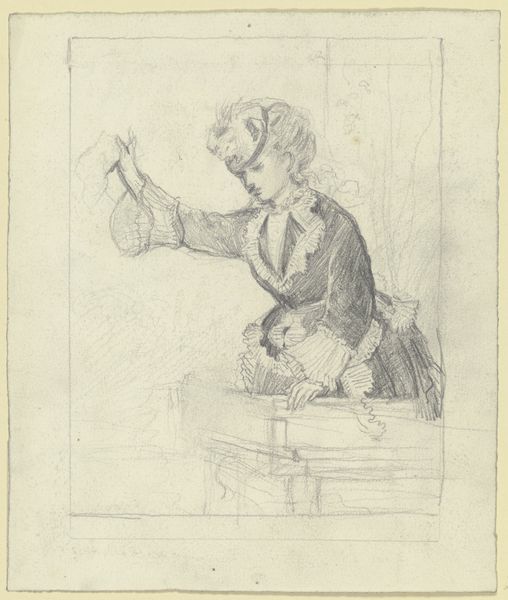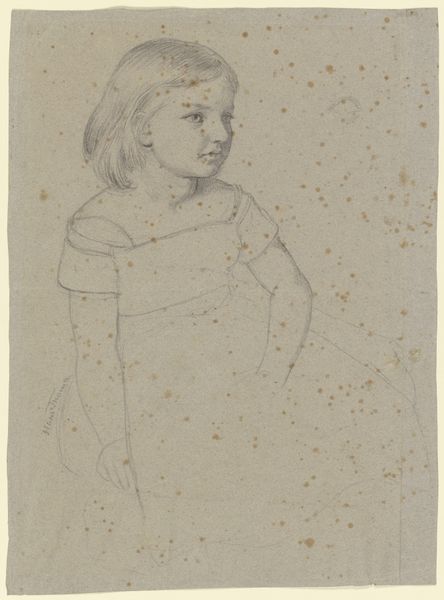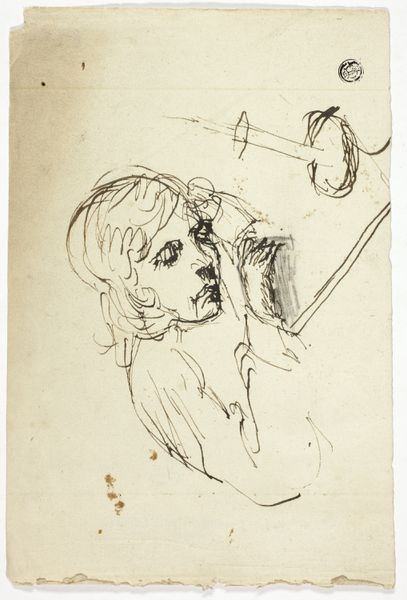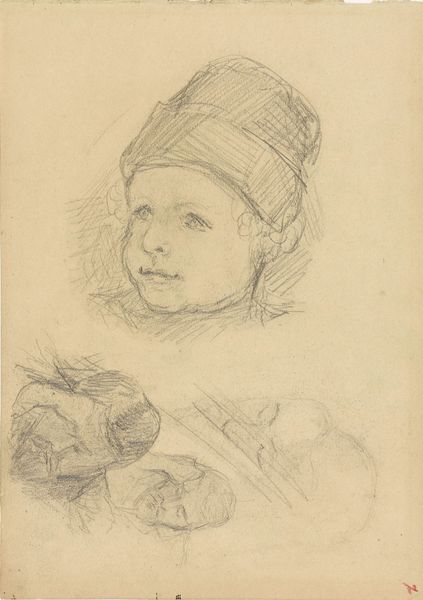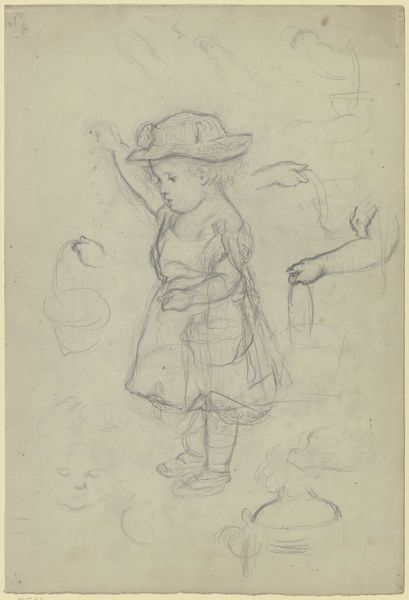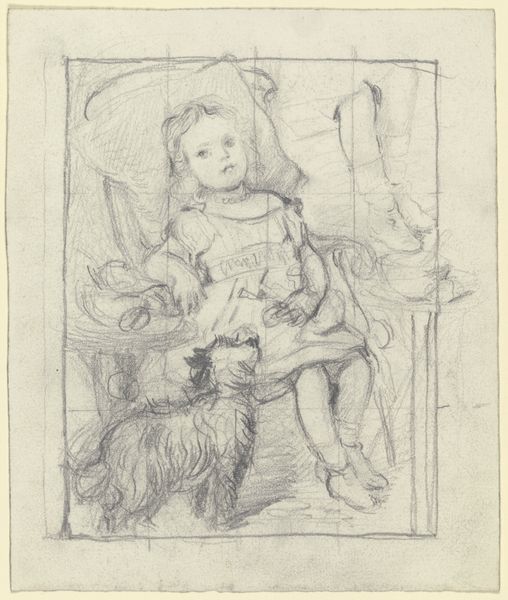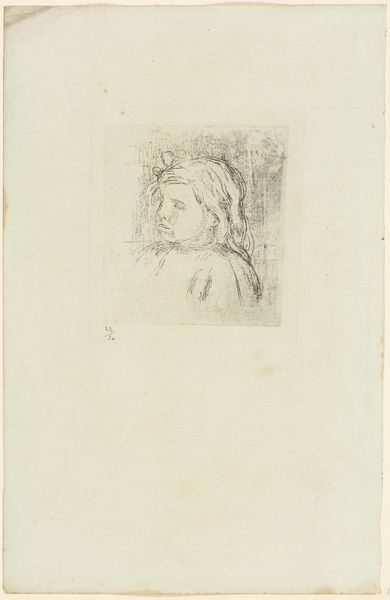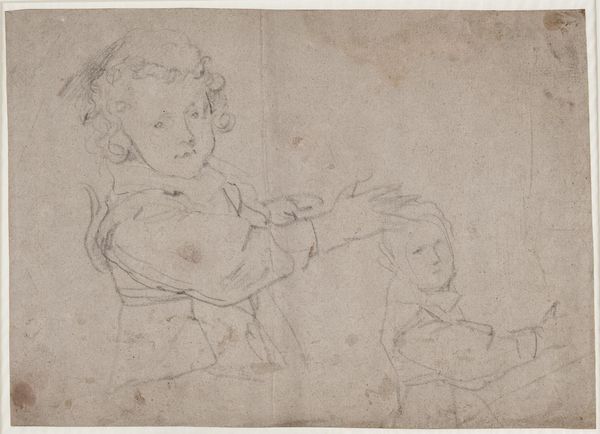
drawing, paper, pencil
#
portrait
#
pencil drawn
#
drawing
#
figuration
#
paper
#
pencil
#
realism
Copyright: Public Domain
Editor: We're looking at Otto Scholderer’s _The Blackberry Feast_ from 1872, a drawing on paper rendered in pencil, and currently housed in the Städel Museum. It feels like a fleeting moment captured, almost like a sketch from a memory. What stands out to you in this piece? Curator: The immediate thing I notice is the interplay between the 'finished' central figure and the surrounding sketches. It highlights the labour of the artistic process itself. What kind of paper did Scholderer use, and where would he have obtained it? These kinds of questions tell us so much about art making. Editor: I hadn't considered the paper itself. It does look like a well-worn material. Curator: Exactly. The relative cost of materials is interesting: even a simple sketch like this relies on resource extraction and processing. Think about the graphite: its source, the tools required to transform it into a drawing implement. Were these resources readily available to Scholderer or would they have to be imported? Editor: So, even a simple pencil sketch hints at a complex web of production and consumption? It's a bit mind-blowing to think about. Curator: Precisely. It moves beyond the artist's intention and asks us to think about the system that enabled this image to exist in the first place. Were there, for instance, certain technological innovations around the production of graphite pencils or paper manufacturing techniques, which were booming at this time due to industrialization, that aided Scholderer in his practice? These aspects of art production often get ignored. Editor: That changes how I look at the art. I suppose focusing on material reveals untold details about even what appears on the surface to be something basic or self-explanatory. Curator: Yes, by investigating the materials, we question what constitutes art and can explore the socio-economic structures in which art objects come into being.
Comments
No comments
Be the first to comment and join the conversation on the ultimate creative platform.
